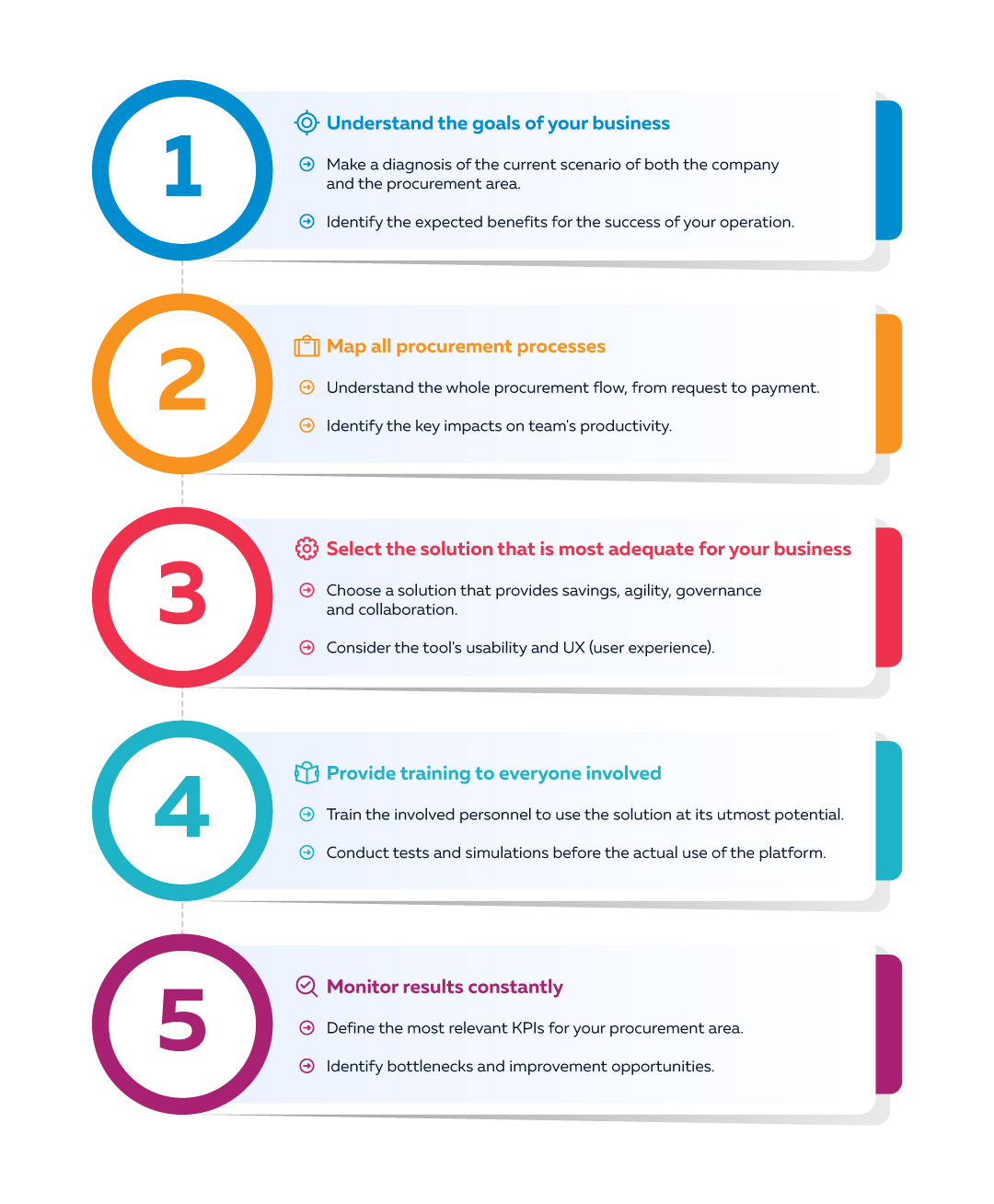
The automation of procurement processes is now a reality in many businesses, due to the several good results they generate for business procedures.
By transforming manual steps into more agile, cost-effective, safe and even sustainable operations, buyers gain more time to innovate and make the best decisions.
Despite this evolution, there are still businesses and professionals that resist to new technologies, mainly due to poor visibility on how digitization can be a factor of competitiveness and acceleration of growth.
Unlike the myth that still persists, the automation of procurement processes won’t replace the role of buyers: it will rather complement their activities.
In this post, you can better understand what procurement automation is, along with its benefits and some tips on how to implement a solution successfully.
Enjoy your reading!
What is procurement processes automation?
The automation of procurement processes is achieved through the use of digital e-Procurement solutions, to replace manual activities in the area.
Even if buyers can receive proposals through e-mails from their suppliers, the risks of compliance, low productivity and failures in the processes are still very high.
In this scenario, the procurement areas that still resist to process digitization will lose competitiveness, and may not survive in the long term.
Additionally, the automation of procurement processes makes the buyers free from operational routine, so they can focus on relevant strategies for businesses.
In fact, processes that use to take days, or even months, can now be carried out on a single on-line platform.
The new procurement professionals, who were merely known as ‘order takers’ previously, are now strategic negotiators and can even contribute to business innovation.
See the benefits of procurement process automation
- Higher productivity
With the automation of operational processes, purchases are more agile, with lower lead time.
- Cost reduction
Less operational activities mean less effort and unnecessary investments.
- Higher data reliability
Quotations with more suppliers stimulate competitiveness and ensure more savings.
- Better prices
Quotations with more suppliers stimulate competitiveness and ensure more savings.
- Higher data reliability
Process automation contributes to assure correct and secure information.
- Process standardization
Processes that are conducted in the same way, on a continuous basis, collaborate to decrease errors and delays.
- Integration between areas
Thanks to automated procurement processes, you can ensure integration among the different areas involved.
- Procurement planning
Access to procurement and price history, among other relevant data, as a support to new acquisitions.
- Transaction transparency
All interactions are logged on the platform, thus allowing compliance and making audits easier.
- Access to indicators (KPIs)
Accessing procurement KPIs contributes to a constant decision-making, based on data.
- Better relationship with suppliers
It improves communication and interaction between business partners.
How to automate procurement processes in your company
The automation of your company’s procurement processes can occur in a gradual and scalable way, through a well-structured and planned change management process.

See below some tips for a successful automation of your procurement processes
-
Choose the optimal solution for your business
You must be careful to choose a procurement platform, considering that the tool must meet the different needs of your business.
-
Assemble a support team
Select some people as facilitators, so they will be able to answer questions from other professionals, regarding the whole digitization process.
-
Define who will be in charge of implementation
This kind of definition guarantees an adequate and assertive control of the entire change management, thus avoiding issues that can create complications.
-
Start with the simplest processes
Even if the automation of procurement processes is complete, it’s better to start automating the simplest processes.
-
Share what is being done
Communication with other areas is a crucial step when the solution is being implemented, to make everyone aware of the new procurement processes.
-
Empower buyers and suppliers
Training the people involved – both buyers and suppliers – is vital to assure that everyone can share the benefits offered by technology and automation.
-
Evaluate the results
Assess all impacts of the procurement management solution on the buyers’ routine and discover if there are adjustments to do.
Has this post been useful to you? You can also be updated on the main themes of the procurement universe. Subscribe to our newsletter now. Just enter your e-mail here.
See you next time! 😉


 Português do Brasil
Português do Brasil Español
Español Português
Português
